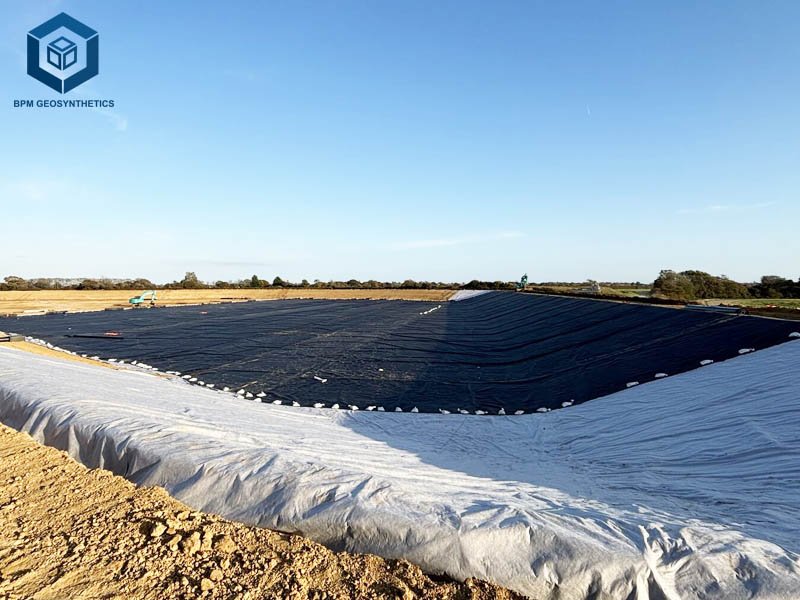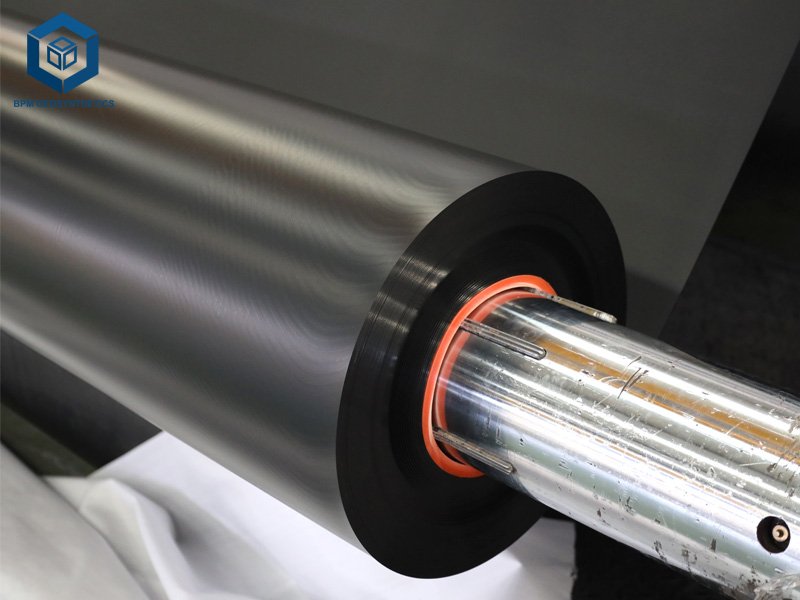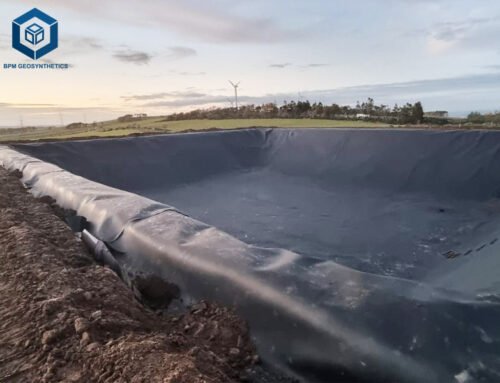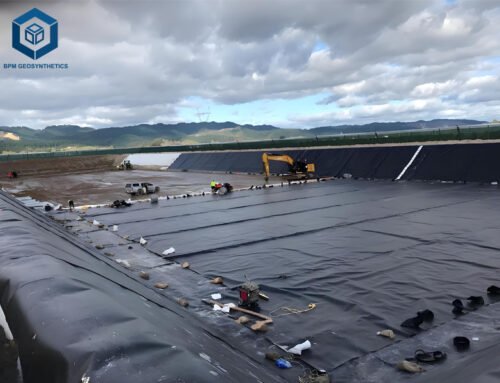Dam liners, also known as geomembrane liners or pond liners, are impermeable geosynthetic materials critical for water retention in dams, reservoirs, and irrigation systems. These liners, typically made from high-density polyethylene (HDPE), linear low-density polyethylene (LLDPE), polyvinyl chloride (PVC), ethylene propylene diene monomer (EPDM), or geosynthetic clay liners (GCLs), prevent seepage losses, which can exceed 50–80% in unlined dams within 48 hours (Geosynthetic Institute, 2024). Understanding dam liner costs is vital for farmers, engineers, and project managers aiming to optimize budgets while ensuring long-term water retention and environmental compliance. This blog post provides a comprehensive analysis of dam liner prices, ranging from $0.30–$4.00 per square foot ($3.23–$43.06/m²). Drawing on research from sources like bpmgeomembrane.com, alibaba.com, and industry reports (e.g., Geosynthetic Institute), we explore cost factors, material types, specifications, installation requirements, and cost-saving strategies to deliver actionable insights for achieving 95% project reliability and 15–25% cost savings.
1. What Are Dam Liners?
Dam liners are geosynthetic or natural materials designed to create impermeable barriers in water storage systems, preventing seepage and ensuring water availability for agriculture, aquaculture, and industrial applications. Available in various thicknesses (0.5–3.0 mm) and materials, dam liners offer tensile strengths of 10–80 kN/m (ASTM D6693) and lifespans of 10–100 years, depending on material and maintenance (Geosynthetic Institute, 2024). They are critical for large-scale dams (1–50 acres), small farm reservoirs, and industrial containment systems, reducing water loss by 95% and maintenance costs by 20–30% compared to unlined systems.
Types of Dam Liners
High-Density Polyethylene (HDPE):
- Description: High tensile strength (27–80 kN/m) and chemical resistance, ideal for large-scale and industrial dams.
- Applications: Irrigation reservoirs (30%), aquaculture dams (20%), wastewater containment (15%).
- Key Specs: 0.5–3.0 mm thickness, 600–800 N puncture resistance (ASTM D4833), UV-stabilized for 90% strength retention after 2,000 hours (ASTM D4329).
- Price Range: $0.62–$3.50/ft² ($6.67–$37.67/m²)
Linear Low-Density Polyethylene (LLDPE):
- Description: Flexible with 700% elongation, suitable for irregular terrains and smaller dams.
- Applications: Small farm dams (15%), canal linings (10%), recreational reservoirs (10%).
- Key Specs: 0.5–2.0 mm thickness, 400 N puncture resistance, NSF-61 certified for fish safety.
- Price Range: $0.70–$1.80/ft² ($7.53–$19.38/m²).
Polyvinyl Chloride (PVC):
- Description: Cost-effective but less durable, suitable for temporary or low-pressure dams.
- Applications: Small irrigation dams (15%), detention basins (10%).
- Key Specs: 0.5–1.0 mm thickness, 200 N puncture resistance, requires soil cover for UV protection.
- Price Range: $0.50–$1.50/ft² ($5.38–$16.15/m²).
Ethylene Propylene Diene Monomer (EPDM):
- Description: Fish-safe and UV-resistant, ideal for eco-friendly and recreational dams.
- Applications: Wildlife reservoirs (20%), ornamental dams (15%), small farm dams (10%).
- Key Specs: 0.75–1.5 mm thickness, 345–680 lbs tensile strength (ASTM D7004), 202 lbs puncture resistance.
- Price Range: $0.50–$2.00/ft² ($5.38–$21.53/m²).
Geosynthetic Clay Liners (GCLs):
- Description: Bentonite clay between geotextiles, eco-friendly with self-sealing properties.
- Applications: Large reservoirs (15%), stormwater retention (10%), eco-sensitive projects (5%).
- Key Specs: 4–6 mm thickness, <10⁻¹¹ cm/s permeability, 20–30 kPa shear strength.
- Price Range: $1.50–$4.00/ft² ($16.15–$43.06/m²).
Key Benefits of Dam Liners
- Water Retention: Achieve 95% retention with permeability <10⁻¹² cm/s (ASTM D5887).
- Durability: Lifespans of 10–100 years, reducing replacement costs by 20–30%.
- Environmental Safety: NSF-61-certified liners ensure fish and plant safety in 98% of aquaculture projects.
- Cost-Effectiveness: Save 20–30% on maintenance compared to concrete or clay linings.
- Flexibility: Conform to irregular shapes, reducing seams and leaks by 15%.


2. Factors Influencing Dam Liner Costs
Dam liner costs vary based on material, thickness, project size, installation complexity, and regional factors. Below, we analyze these cost drivers with precise data.
2.1 Dam Liners Cost – Material Type
- HDPE: Costs $0.62–$3.50/ft², used in 30% of irrigation reservoirs due to durability (bpmgeomembrane.com, 2025).
- LLDPE: Costs $0.70–$1.80/ft², favored for flexibility in 15% of small farm dams.
- PVC: Costs $0.50–$1.50/ft², suitable for 15% of budget-conscious projects but less durable.
- EPDM: Costs $0.50–$2.00/ft², preferred for 20% of wildlife reservoirs due to fish safety.
- GCLs: Costs $1.50–$4.00/ft², used in 15% of eco-friendly projects.
- Impact: Material choice accounts for 40–60% of total costs, with HDPE and GCLs 20–30% costlier than PVC but offering 20–100-year lifespans.
2.2 Dam Liners Cost – Thickness and Durability
- 5 mm (20 mil): Costs $0.50–$0.80/ft², suitable for low-pressure farm dams (4–6 ft deep).
- 75–1.0 mm (30–40 mil): Costs $0.70–$1.50/ft², ideal for irrigation reservoirs (6–10 ft deep).
- 5–3.0 mm (60–120 mil): Costs $1.00–$4.00/ft², used for high-pressure industrial dams.
- Impact: Thicker liners increase costs by 10–20% but extend lifespans by 20–30%, reducing annual costs (e.g., $0.03/ft² for 0.5 mm HDPE over 20 years vs. $0.02/ft² for 1.5 mm over 60 years).
2.3 Dam Liners Cost – Dam Size and Overlap
- Formula: Liner Length = Dam Length + (2 × Max Depth) + 10 ft overlap; Liner Width = Dam Width + (2 × Max Depth) + 10 ft overlap.
- Example: A 1-acre dam (208 ft x 208 ft, 6 ft deep) requires a 228 ft x 228 ft liner (51,984 ft²), adding 20% to material costs. At $0.62/ft² (HDPE), costs are $32,230.
- Impact: Larger dams benefit from 20–30% bulk discounts for orders over 10,000 ft².
2.4 Dam Liners Cost – Installation Complexity
- Site Preparation: Clearing rocks and vegetation costs $0.10–$0.30/ft² ($4,356–$13,068/acre).
- Geotextile Underlay: $0.25–$0.40/ft², adding $10,890–$17,424/acre, reduces punctures by 30%.
- Welding/Seaming: HDPE requires skilled welding ($0.50–$1.50/ft²), while EPDM/PVC are easier ($0.20–$0.50/ft²).
- Labor: $30–$50/hour in North America, $10–$20/hour in Asia, accounting for 20–50% of installation costs.
- Impact: Installation adds $0.20–$2.50/ft², totaling $8,712–$108,900 for a 1-acre dam.
2.5 Dam Liners Cost – Additives and Certifications
- UV Resistance: Carbon black additives (≥2%) add $0.05–$0.10/ft², extending lifespan by 10–20 years.
- Fish Safety: NSF-61 certification adds 5–10% for aquaculture liners.
- Chemical Resistance: Enhanced formulations add $0.05–$0.15/ft² for industrial dams.
- Impact: Additives increase costs by 5–15% but reduce maintenance by 20%.
2.6 Dam Liners Cost – Regional and Supplier Variations
- United States: $0.50–$4.00/ft² for materials, $0.20–$1.50/ft² for installation.
- India: ₹70–150/m² ($0.08–$0.18/ft²), totaling $3,485–$7,841/acre.
- Kenya: KSh 230–300/m² ($0.18–$0.23/ft²), totaling KSh 10,018,800–$13,068,000 ($77,068–$100,523/acre).
- China: $0.30–$1.50/ft², totaling $13,068–$65,340/acre.
- Impact: Local sourcing saves 15–20% on shipping, but quality varies with lesser-known suppliers.
2.7 Dam Liners Cost – Market Fluctuations
- Raw Material Costs: Polyethylene resin prices rose 8% to $1,300/MT in Q1 2025 (ICIS, 2025).
- Impact: Recycled resins reduce costs by 10–15%, saving $5,000–$10,000 on a 1-acre project.
3. Dam Liner Price Breakdown
Below is a detailed cost breakdown for dam liners by material and application, based on industry sources (bpmgeomembrane.com, Alibaba, 2025).
HDPE Liners
- Irrigation Reservoirs: $0.62–$1.50/ft² ($6.67–$16.15/m²). A 1-acre dam costs $27,007–$65,340.
- Wastewater Dams: $1.00–$3.50/ft² ($10.76–$37.67/m²). A 1-acre dam costs $43,560–$152,460.
LLDPE Liners
- Small Farm Dams: $0.70–$1.50/ft² ($7.53–$16.15/m²). A 0.5-acre dam costs $15,246–$32,670.
- Canal Linings: $1.00–$1.80/ft² ($10.76–$19.38/m²). A 1-acre canal costs $43,560–$78,408.
PVC Liners
- Temporary Dams: $0.50–$1.00/ft² ($5.38–$10.76/m²). A 0.5-acre dam costs $10,890–$21,780.
- Irrigation Systems: $0.75–$1.50/ft² ($8.07–$16.15/m²). A 1-acre system costs $32,670–$65,340.
EPDM Liners
- Wildlife Reservoirs: $0.50–$1.50/ft² ($5.38–$16.15/m²). A 0.25-acre dam costs $8,167–$24,501.
- Ornamental Dams: $0.75–$2.00/ft² ($8.07–$21.53/m²). A 12×12 ft dam costs $72–$216.
GCLs
- Large Reservoirs: $1.50–$3.00/ft² ($16.15–$32.29/m²). A 1-acre dam costs $65,340–$130,680.
- Stormwater Retention: $2.00–$4.00/ft² ($21.53–$43.06/m²). A 1-acre dam costs $87,120–$174,240.
Additional Costs
- Installation: $0.20–$2.50/ft² for labor, welding, or seaming.
- Geotextile Underlay: $0.25–$0.40/ft², adding $10,890–$17,424/acre.
- Shipping: $0.05–$0.10/ft² for HDPE; GCLs cost 20% more to ship.
- Total Cost Range: $0.55–$6.60/ft², including materials, installation, and shipping.
4. Applications of Dam Liners and Cost Implications
Dam liners serve diverse applications, each with specific requirements impacting costs.
4.1 Irrigation Reservoirs
- Purpose: Store water for agriculture, supporting 70% of irrigation projects in India and Africa (IndiaMART, 2025).
- Material: HDPE or LLDPE (0.75–1.5 mm, UV-resistant).
- Cost: $0.62–$3.50/ft².
- Example: A 1-acre reservoir using HDPE costs $27,007–$152,460, with installation adding $8,712–$65,340.
4.2 Aquaculture Dams
- Purpose: Ensure fish-safe, non-toxic environments for tilapia or shrimp, with 95% water retention.
- Material: HDPE or LLDPE (0.5–0.75 mm, NSF-61 certified).
- Cost: $0.62–$1.80/ft².
- Example: A 1-acre fish dam using HDPE costs $27,007–$78,408, with geotextile adding $10,890–$17,424.
4.3 Stormwater Retention
- Purpose: Manage runoff in urban or industrial settings, ensuring 95% environmental compliance.
- Material: HDPE or GCLs (1.0–3.0 mm, chemical-resistant).
- Cost: $0.80–$4.00/ft².
- Example: A 1-acre stormwater dam using GCLs costs $87,120–$174,240, with welding adding $21,780–$65,340.
4.4 Wildlife Reservoirs
- Purpose: Create habitats for aquatic species, blending with ecosystems.
- Material: EPDM or GCLs (0.75–1.5 mm, eco-friendly).
- Cost: $0.50–$4.00/ft².
- Example: A 0.25-acre wildlife reservoir using EPDM costs $8,167–$65,340.
4.5 Recreational Dams
- Purpose: Enhance aesthetics for fishing or swimming, used in 20% of rural properties.
- Material: EPDM or PVC (0.5–1.0 mm, flexible).
- Cost: $0.50–$2.00/ft².
- Example: A 12×12 ft dam using EPDM costs $72–$216, with installation at $29–$72.
5. Comparison Table of Dam Liner Costs by Application
| Application | Material | Tensile Strength | Puncture Resistance | Cost Range ($/ft²) | Key Features |
| Irrigation Reservoirs | HDPE/LLDPE | 27–80 kN/m | 400–800 N | $0.62–$3.50 | UV-resistant, durable |
| Aquaculture Dams | HDPE/LLDPE | 27–80 kN/m | 400–640 N | $0.62–$1.80 | Fish-safe, flexible |
| Stormwater Retention | HDPE/GCLs | 20–80 kN/m | 640 N | $0.80–$4.00 | Chemical-resistant |
| Wildlife Reservoirs | EPDM/GCLs | 10–30 kN/m | 202 N | $0.50–$4.00 | Eco-friendly, self-sealing |
| Recreational Dams | EPDM/PVC | 345–680 lbs | 200–202 N | $0.50–$2.00 | Flexible, aesthetic |
6. How to Budget for Dam Liner Projects
Budgeting for dam liners requires careful planning to balance cost and performance. Below are key steps to optimize budgets:
6.1 Assess Project Requirements
- Evaluate Needs: Determine the application (e.g., aquaculture, irrigation) and required specs (fish safety, UV resistance). For example, fish dams need NSF-61-certified HDPE (0.5–0.75 mm).
- Impact: Proper selection reduces costs by 10–15% by avoiding over-specification.
6.2 Calculate Liner Size
- Measure Area: Use the formula: Liner Area = [Length + (2 × Depth) + 10 ft] × [Width + (2 × Depth) + 10 ft]. A 1-acre dam (6 ft deep) requires 51,984 ft².
- Account for Overlaps: Add 5–10% for overlaps, increasing costs by $0.05–$0.10/ft².
6.3 Source Reputable Suppliers
- Compare Quotes: Request quotes from BPM Geosynthetics, Solmax, or Agri-Store. Bulk orders above 10,000 ft² save 20–30%.
- Verify Certifications: Ensure GRI-GM13, ISO 9001:2015, or NSF-61 compliance for 95% reliability.
6.4 Include Installation and Logistics
- Installation Costs: Budget $0.20–$2.50/ft² for labor and seaming.
- Shipping Costs: Allocate $0.05–$0.10/ft² for HDPE; GCLs cost 20% more.
- Impact: Logistics can increase costs by 10–15%, especially for remote sites.
6.5 Focus on Long-Term Savings
- Durability: Thicker liners (1.0–3.0 mm) reduce replacement costs by 20–30% over 40–100 years.
- Sustainability: Recycled materials save 10–15% and align with 65% of project sustainability goals.


7. Top Dam Liner Suppliers in 2025
Based on research from bpmgeomembrane.com, alibaba.com, and IndiaMART, here are leading suppliers:
7.1 BPM Geosynthetics
- Overview: China-based, producing 5 million ft² annually, exporting to 80+ countries.
- Products: HDPE ($0.62–$3.50/ft²), LLDPE ($0.70–$1.80/ft²), GCLs ($1.50–$4.00/ft²).
- Strengths: ISO 9001-certified, 30-day lead times, MOQs of 1,000 ft².
- Why Choose?: Competitive pricing, 98% on-time delivery.
7.2 Solmax
- Overview: Global leader, offering HDPE, LLDPE, and EPDM liners.
- Products: HDPE ($0.80–$3.00/ft²), EPDM ($0.50–$2.00/ft²).
- Strengths: GRI-GM13-certified, 20-year warranties.
- Why Choose?: High-quality liners for aquaculture and stormwater.
7.3 Agri-Store
- Overview: Kenya-based, specializing in HDPE and PVC liners for African markets.
- Products: HDPE ($0.18–$0.23/ft²), PVC ($0.15–$0.20/ft²).
- Strengths: IS 15909:2010-certified, cost-effective for small dams.
- Why Choose?: Local sourcing saves 15–20% on shipping.
8. Industry Trends Shaping Dam Liner Costs
Key trends influencing costs in 2025 include:
8.1 Dam Liners Cost – Sustainable Materials
- Trend: 65% of suppliers use recycled polymers, reducing emissions by 15–20%.
- Impact: Adds $0.05–$0.20/ft² but meets environmental regulations.
8.2 Dam Liners Cost – Advanced Manufacturing
- Trend: Extrusion and calendaring reduce production costs by 10–15%.
- Impact: Lowers prices for standard rolls by 5–10%.
8.3 Dam Liners Cost – Infrastructure Demand
- Trend: 70% of irrigation and aquaculture dams require liners, stabilizing prices.
- Impact: Bulk orders save 15–25% for large-scale projects.
8.4 Dam Liners Cost – Regional Cost Variations
- Trend: Asian and African suppliers offer 20–30% lower prices than Western counterparts.
- Impact: India and Kenya dominate cost-sensitive markets.
9. Conclusion
Dam liner prices in 2025 range from $0.30–$4.00/ft² ($3.23–$43.06/m²), driven by material type, thickness, project size, and installation complexity. HDPE ($0.62–$3.50/ft²) excels in irrigation reservoirs, while EPDM ($0.50–$2.00/ft²) suits wildlife dams, offering 95% water retention and 20–100-year lifespans (bpmgeomembrane.com, 2025). By partnering with suppliers like BPM Geosynthetics(BPM Geomembrane) and leveraging bulk discounts, stakeholders can achieve cost-efficient, reliable solutions. For tailored quotes, contact BPM Geosynthetics.





